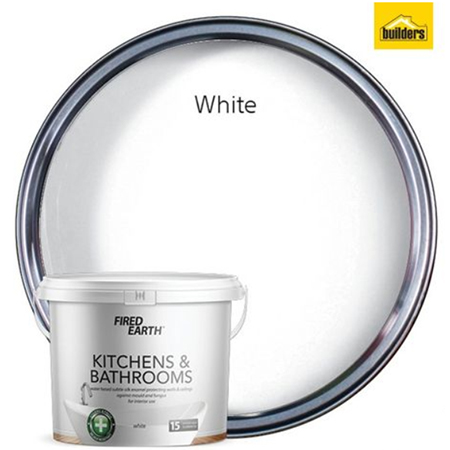Alternatives to Tile in a Bathroom
Tiling a bathroom means that you are stuck with the same look until you can afford to rip out and replace the tiles, but what if you wanted to paint instead?
15/12/2021
pinterest.com/pin/3729612205991224/
Most of us have grown up with a tiled bathroom, whether it is tiles that go halfway or three-quarters of the way up the walls or the tiles go from floor to ceiling. Tiled bathrooms have adorned our homes for decades. We all know that times change, and new technologies improve our life - mostly for the better, but do we still have to install tiles in a bathroom or are there other alternatives?
Affordable bathroom makeover? Look at painting walls in a bathroom and putting extra into a stunning feature wall above a vanity or bathtub.
pinterest.com/pin/859413541373326210/
The Pros and Cons of a Tiled Bathroom
A tiled bathroom is considered the norm when building or revamping a home. We trust that tiles will protect the room from moisture and humidity, but there are also downsides to tiling bathroom walls. We look at some of the pros and cons of tiling a bathroom and then offer a few solutions that you could do as an alternative to tiles.
Positives of tiles in a bathroom:
• Moisture resistant
When properly installed and grouted, tiles offer protection against moisture and prevent mould and mildew, that is, if you keep the grout in perfect condition and regularly seal around all the edges.
• Affordable in comparison
When compared to other materials that can be used on bathroom walls, with the exception of paint, ceramic tiles offer a reasonably priced alternative.
A paint finish widens the possibilities for designing and improving a bathroom without too much expense.
real simple
Negatives of tiles in a bathroom:
• Grout can crack or become porous
As the grout between tiles breaks down and starts to leave gaps between tiles, this will affect the level of protection against moisture. It can also result in further damage, due to moisture between and behind the tiles, if not attended to immediately.
• Silicone sealer must be re-applied
To prevent the ingress of water around sinks, toilets, and bathtubs, silicone sealer is applied around edges. When the silicone sealer degrades it allows moisture into the surrounding areas and this can lead to damage to walls and the possibility of mould gaining a foothold, which is not something you want to happen. Silicone sealer needs to be removed and replaced immediately to prevent leaks and mould.
• Not easily replaced
The main problem when installing tile in a bathroom is that after a couple of years you will find that the tiles installed are no longer manufactured. This leaves you with a problem if you need to replace a broken or chipped tile or want to do any repairs or improvement, mainly since you won't be able to source replacement tiles that match. There is the option to buy extra tiles, but should the situation arise that you have a burst pipe or want to make any changes to the existing bathroom layout, it is a given that you will need to rip out and replace all the tiles.
A combination of paint for walls and luxury tiles for a splashback look stunning in a bathroom and reduce the cost of a makeover or renovation.
pinterest.com/pin/92675704823493419/
Alternatives to a Tiled Bathroom
As mentioned above, advancements in technology, including that of cementitious (cement-based) finishes, and the introduction of waterproofing, damp proofing and acrylic paint, means that there are now a few options to consider as an alternative to tiles. And the added benefit of these options is the cost and easy DIY alternative if you want to save even more money and do it yourself.
pinterest.com/pin/49258189664466405/
• Cementitious (cement-based) finishes
Becoming increasingly popular as zero-maintenance solutions for a bathroom, cement-based finishes are durable and long-lasting. These finishes are also maintenance-free when applied properly. A cementitious finish on walls provides subtle colouring and a suede finish that goes well with modern bathroom designs.
pinterest.com/pin/705798572853696581/
Cement-based wall - or floor - finishes finish off a contemporary, minimalist, or modern bathroom.
All cement-based wall finishes - and floors - provide a waterproof coating that is seamless and grout-free. These finishes are also resistant to mould and mildew, making them the ideal finish for wet rooms or bathrooms with high humidity or moisture content. The only downside is that a professional should install a cementitious finish for effective coating of walls.
A positive benefit in favour of cement-based coatings is that the entire bathroom - including the shower - can be finished to match throughout the space.
pinterest.com/pin/505177283205652563/
• Painted finish
Nowadays, it is easy to purchase quality paint products with a formulation that is both waterproof and mould-resistant and perfect for a bathroom (excluding a shower cubicle or wet room). And while paint itself may not last as long as tiles, you at least have the option to change the colour of the bathroom or make changes without a huge expense.
With a painted finish on bathroom walls, you can select a colour to brighten a dark bathroom or a lighter colour that gives the visual illusion of a larger space.
pinterest.com/pin/119134352633352851/
Decorating a bathroom with paint gives you the freedom to select colours that complement fittings and furniture or to set the tone for a specific style.
When doing renovations or improvements to a bathroom, chances are that the tiles will have to go. If you are working on a tight budget, you can save a lot of money by not installing tiles and putting the extra cash towards a luxurious bathroom suite or shower.
pinterest.com/pin/11259067804963418/












